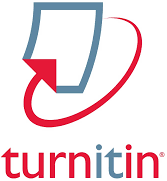THE EFFECTIVENESS OF WHITE TURMERIC EXTRACT (Curcuma zedoaria) AGAINST THE IMMUNE SYSTEM OF VANNAMEI SHRIMP (Litopenaeus vannamei)
DOI:
https://doi.org/10.29303/jfh.v2i1.1330Keywords:
Vaname shrimp, white turmeric, immunostimulant, immune systemAbstract
Vannamei shrimp entered Indonesia to replace tiger prawns (Penaeus monodon), which then experienced disease attacks and decreased quality. However, with various advantages, the cultivation of vaname shrimp still has problems during the cultivation period. Therefore, this study will determine the effect of adding white turmeric extract (Curcuma zedoaria) on the immune system of vannamei shrimp (Litopenaeus vannamei). This research was carried out for 60 days using experimental research methods, and the research design used was a completely randomized design (CRD) consisting of 4 treatments with 3 replications were P1: Artificial feed infection, P2: Artificial feed +0, 5% white turmeric extract, P3: Artificial Feed+1% white turmeric extract, P4: Artificial Feed+2% white turmeric extract. The results showed that administration of white turmeric extract (Curcuma zedoaria) with a dose of 1% gave the best results and natural effect on the survival rate of 83.3%, Total Haemocyte Count of 1.4x107 cells/mL, and Differential Haemocyte Count (hyaline cells). In addition, by 23%, semi-granulocytes by 18.3%, and granulocytes by 58.7%, which play a role in the immune system of white vaname shrimp. In addition, the value of phagocytic activity was 68.8%.
Downloads
Published
Issue
Section
License
1. The copyright of this journal belongs to the Editorial Board, based on the author's consent, while the moral rights of the publication belong to the author(s).
2. The formal legal aspect of journal accessibility refers to the same Creative Common Attribution + Noncommercial + ShareAlike (CC BY-NC-SA), implying that publication can be used for non-commercial purposes in its original form.
3. Every publication (printed/electronic) is open access for educational, research and library purposes. In addition to the objectives stated above, the editorial board is not responsible for copyright infringement















